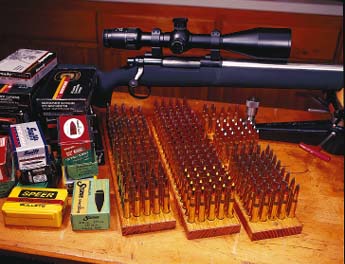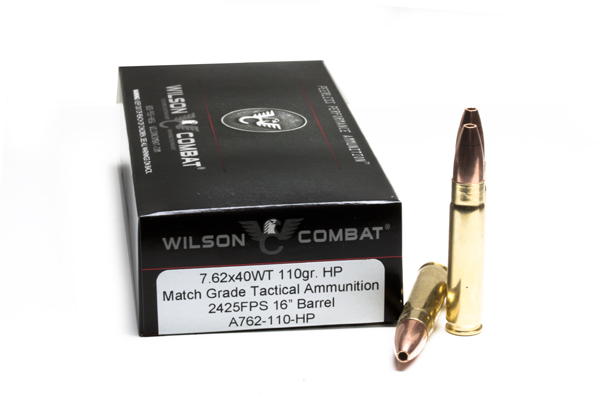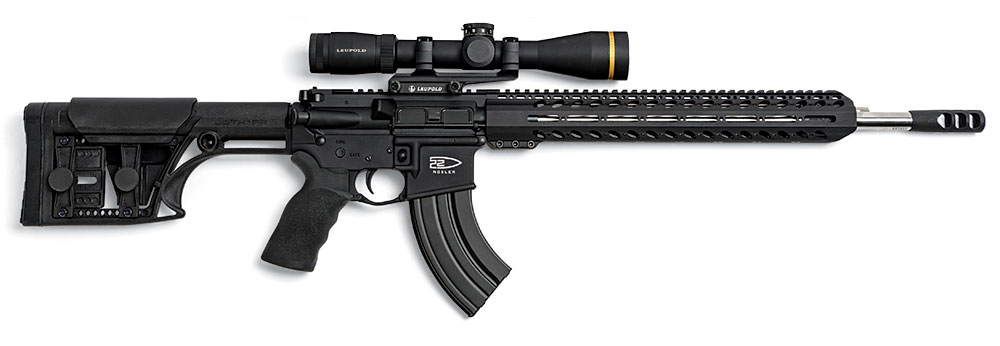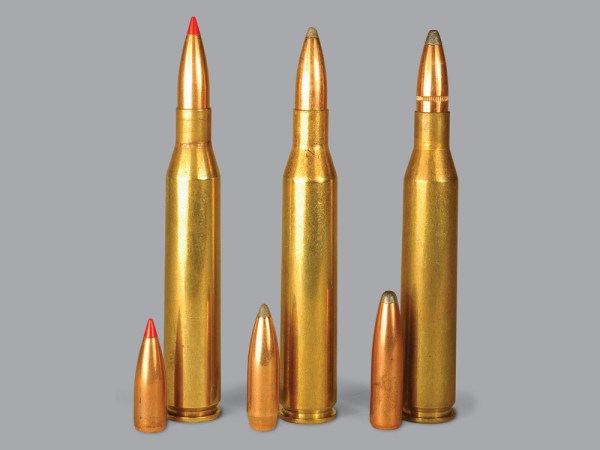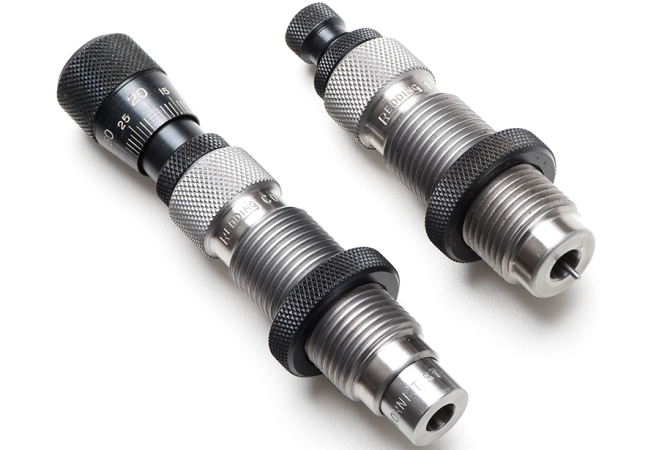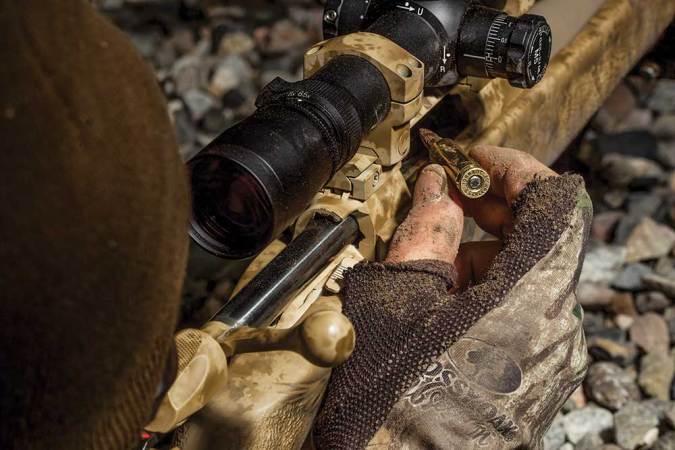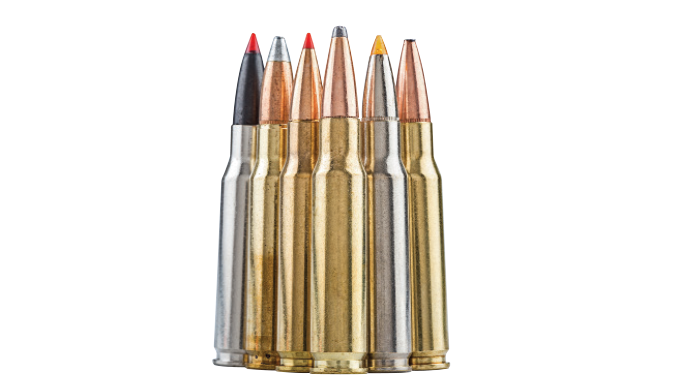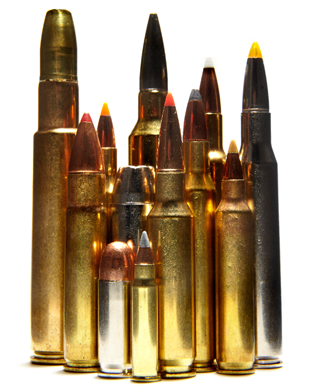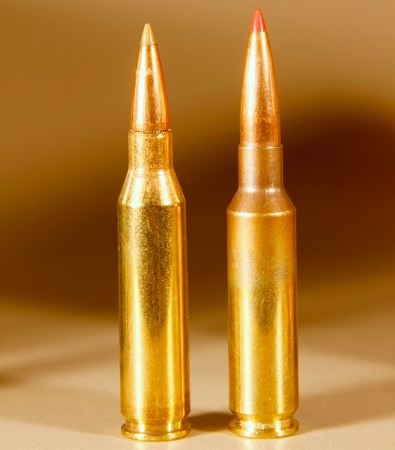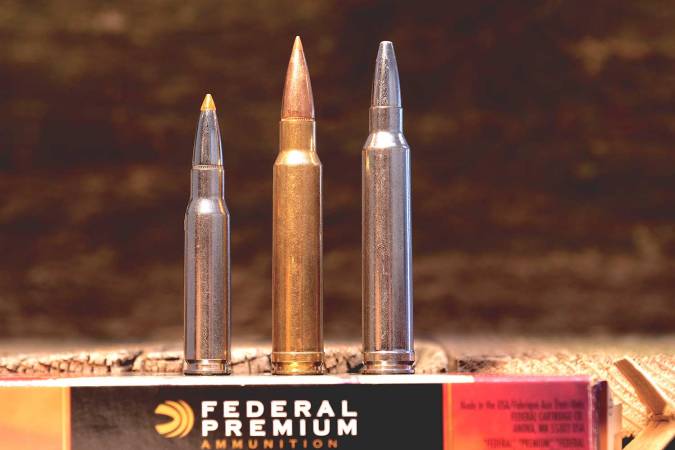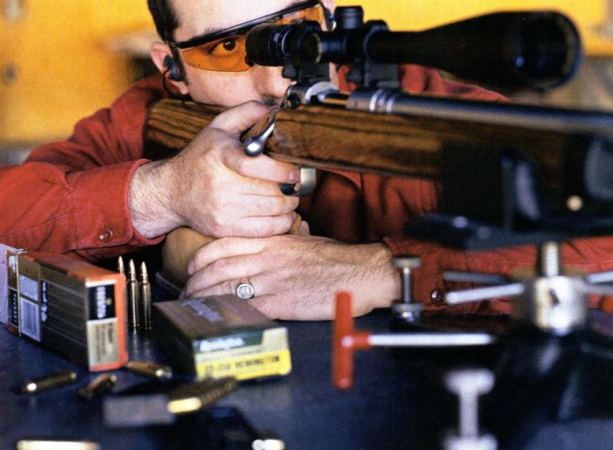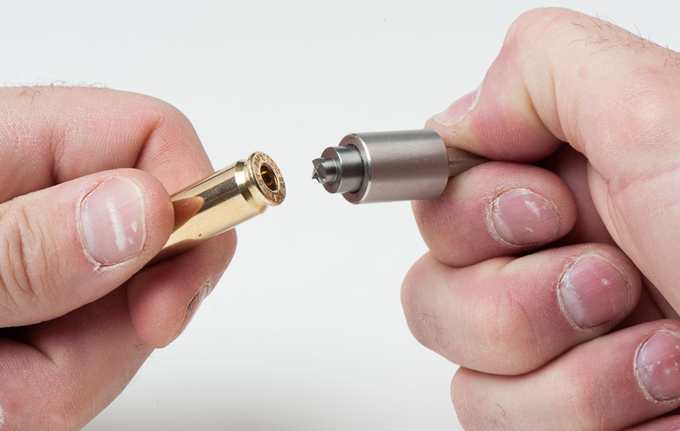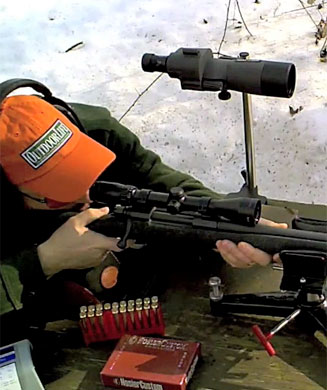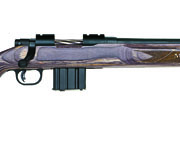We may earn revenue from the products available on this page and participate in affiliate programs. Learn More ›
Caviar and chilled vodka. Biscuits and sawmill gravy. Some things just naturally go together. A couple of others that fit together like a handshake between old friends are varmint shooting and handloading.
Hitting golf-ball-sized targets at 300 yards calls for fine marksmanship and an exceptionally accurate rifle, but both are almost meaningless unless some sophisticated ammunition is added to the equation. This is why so many dedicated varmint hunters are also avid handloaders.
Varmint shooters who reload hundreds of rounds every year save a sizable amount of money, but most will agree that what they save in money is less important than what they can gain in accuracy. So much so, in fact, that the quest for ever more accurate handloads is often an end in itself. But sometimes this quest can lead us down the wrong paths.
Cruise some of the shooting Web sites and you’ll find no end of postings by apostles of accuracy who claim their personal “pet” loads will “shoot inside a quarter inch all day long if I do my part.” Yeah, sure, and warthogs dance the minuet.
This is why I’m not going to insult you with the notion that I possess certain “pet” loads that make my varmint rifles shoot bug-hole-sized groups and will do the same for yours. Instead, what I have to offer are what I call “Standard Loads,” which over the years have proven themselves to bring out the best–or near best–in any rifle. In other words, these are the loads I fire when testing the accuracy of a new varmint rifle. If the rifle isn’t at least reasonably accurate with a well-proven Standard Load, it has an accuracy deficiency unrelated to the ammo it is fed. Later on I’ll list these Standard Loads and, better yet, share a few tips on how to test and refine your own handloads. But first let’s cleanse ourselves of “pet load” myths and related nonsense.
I’m not exactly a heretic when it comes to the pet load theory, but I’m certainly a skeptic. Developing or discovering a pet load is something like trying to pick up a greased ball bearing by its top half–just when you think you’ve got a grip, it slips away. There are a number of reasons for this, some technical and others related to the ways we fool ourselves about rifle accuracy.
Benchrest shooters are by far the most technically minded riflemen and handloaders, so you’d naturally expect that if anyone would be in possession of pet loads by the dozens it would be this group of elite shooters. Yet, go to a big benchrest tournament and ask winners like Tony Boyer to name the weight of the powder charge he uses and he’ll only grin and say something like, “You mean right now or an hour ago?” What he’s confessing is that he has no pet load and is constantly adjusting and refining his load to match conditions. During a tournament that includes six individual matches in a day, he has been known to change his load for every match. It’s that greased-ball-bearing thing again.
Such news as this might be discouraging for handloaders who diligently seek the pet load to end all pet loads, but don’t despair, because there actually are ways to pick up the greased ball bearing. Which takes us to the aforementioned way we sometimes fool ourselves about accuracy.
BREAK IN YOUR BARREL
One of the ways we handloaders fool ourselves about accuracy is by forgetting what I call the “main rule” about rifles and ammunition: (1) an accurate rifle will shoot even mediocre ammo at least fairly well, and (2) an inaccurate rifle will remain inaccurate even with the best ammo. This is why I rely on proven Standard Loads when testing a rifle for its fundamental accuracy. Violators of the main rule tend to waste a lot of time burning up lots of powder and bullets in the mistaken belief that a bum rifle can be made to perform well if only that magic combination of bullet and powder can be discovered.
To be fair, many rifles do become more accurate after they have been fired a few dozen times. This in turn causes a handloader who has been tinkering with different loads to assume he has hit on the magic combination. Nine times out of ten all that really happened was that the rifle simply settled itself into the stock bedding and the barrel got slicked a bit. Which is why I usually do this initial breaking-in with factory ammo. This gives me a good idea of what factory loads the rifle tends to prefer and also provides once-fired cases ready to be reloaded. Also, the groups fired with factory ammo provide a baseline for comparing the accuracy of handloads. Of late the accuracy of some factory-loaded varmint calibers is so good that only outstanding handloads shoot better.
When testing varmint rifles and ammunition for accuracy I always fire five-shot groups. First of all, five-shot groups are almost universally accepted as a valid unit of comparison for the accuracy of varmint rifles and ammo. The varmint rifle classes of benchrest competition, for example, fire five-shot groups and thus provide the hallmarks of fine accuracy. What’s even more valuable about five-shot groups, however, is that if the rifle or ammo is inclined to throw “flyers”–shots out of the group–you’re much more likely to find out about it than if you fire fewer shots. Conversely, five-shot groups that don’t actually measure well can tell you that you’re on the right track when three or four of the shots tend to cluster tightly.
MAKE ENOUGH SAMPLES
Loading accurate ammo is one of the great joys of handloading, but unless reloads are systematically and analytically tested, our best efforts can produce less than the best accuracy.
A typical example of getting started on the wrong foot is the determined handloader who spends a week of evenings assembling a variety of loads. All in all he may have 20 or more load combinations but only five or even just three rounds of each.
So the weekend finds our handloader at the range, ready and determined to discover which of his lovingly constructed handloads shines above the others. No matter that it happens to be a day of gusting wind, blizzard or earthquake, he has it. At the end of the day, when groups are compared, one group is declared smaller than the other and the tired but happy shooter returns to home and loading bench confident that he has discovered the perfect pet load for his varmint rifle. But has he?
With such small sample testing, there are a number of factors that can skew the results: An unnoticed puff of wind, for example, can cause a flyer to make a big group that might otherwise have been the smallest of the day. An overheated barrel can cause groups to widen, as can excessive bore fouling. First shots from a freshly cleaned barrel can also go out of the group, which is why expert experimenters fire a fouling shot or two before firing the test group. All of which explains why so many sincere but misguided handloaders drop the greased ball bearing in their quest for the best load–especially those who try to squeeze so many different load combinations into a day of shooting.
REPEAT AND ELIMINATE Good groups are often a matter of pure chance. This is why repetition and elimination are the heart and soul of good handload development. Rather than crowd a couple dozen different load combinations into a shooting session, try no more than six or eight loads and fire two groups with each load. The correct procedure is not to fire the two identical loads consecutively, but to fire one group with each of the loads, allowing time for the barrel to cool between groups, and also to clean and fire fouling shots. Then, after the first series of test groups are completed, the firing order is reversed for the second series of test groups. This reduces the likelihood of false conclusions that might be reached when particularly good–or bad–groups are fired during a favorable or unfavorable part of the day. When the two groups of each load are averaged you have a clearer idea of the load’s potential. The trick is not to pick out the best load, but to eliminate the worst ones. The loads that produce the smaller group averages then serve as a starting point for further refinement if you’re determined to find the very best combination for your rifle.
GOOD BULLET CHOICES
There are so many propellants and bullets that perform well in varmint cartridges that calling any one of them better than the others is about as pointless as arguing over whose mom bakes the best apple pies. That’s why I stay with Standard Loads when testing varmint rifles. That is not to say, however, that I don’t try a variety of combinations, especially when new bullets and propellants are introduced.
When testing the various .22 calibers (for rifles with 1-in-12-inch or 1-in-14-inch twist, not the faster-twist military and target-type rifles, which require heavier bullets), my basic test bullet is a 52-grain flat-base benchrest-grade bullet that I swage by hand. Similar bullets are offered by commercial and custom bullet makers and are worth a try when you’re eking out the last fraction of accuracy from your rifle.
The exception is the .22 Hornet, which I load with 40- or 45-grain bullets. For the .243 Winchester and 6mm Remington I test with both 75- and 85-grain varmint-type bullets. There are plenty of good ones in the 70- to 85-grain range, and even 55-grainers have been a very pleasant surprise, so take your pick.
STANDARD LOADS TO RELY ON
.22 Hornet PROPELLANT: Hodgdon Lil’ Gun CHARGE*: 13 gr. BULLET WT.: 45 gr.
.222 Rem. PROPELLANT: Alliant ReLoader 7 CHARGE*: 21 gr. BULLET WT.: 50 gr.
.223 Rem. PROPELLANT: Vihta Vuori N133 CHARGE*: 25 gr. BULLET WT.: 52 gr.
.22-250 Rem. PROPELLANT: Hodgdon Varget CHARGE*: 37 gr. BULLET WT.: 52 gr.
.220 Swift PROPELLANT: IMR 4064 CHARGE*: 38 gr. BULLET WT.: 52 gr.
.243 Win. PROPELLANT: IMR 4350 CHARGE*: 44 gr. BULLET WT.: 75 gr.
6mm Rem. PROPELLANT: IMR 4350 CHARGE*: 45 gr. BULLET WT.: 85 gr.
*None of these loads are max.
There are so many excellent propellants and bullets available today that it would be impossible to claim that any particular combination is more accurate than any other. However, these “standard” bullet/cartridge combinations have produced outstanding accuracy and downrange varmint performance in a variety of rifles.
For more shooting information, go to www.outdoorlife.com/shooting

